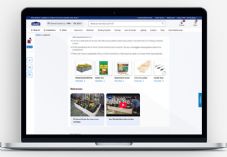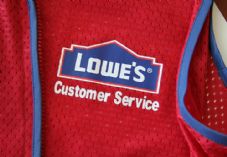International DIY News
Lowe's to introduce robotic assistant in Orchard Supply Hardware store
Lowe’s is introducing robotic shopping assistants at an Orchard Supply Hardware store in San Jose, Calif., in late November. Lowe’s, which acquired Orchard Supply last year, says this is the first retail robot of its kind in the U.S.
The OSHbot will greet customers, ask if they need help and guide them through the store to the product. Besides natural-language-processing technology, the 5-foot tall white robot houses two large rectangular screens—front and back—for video conferences with a store expert and to display in-store specials. The head features a 3-D scanner to help customers identify items. OSHbot speaks English and Spanish, but other languages will be added.
OSHbot, co-created by Lowe’s and startup Fellow Robots, is “solving a big problem,” said Kyle Nel, executive director of Lowe’s Innovation Labs. It is a way to bring more shopping convenience and some of the benefits of e-commerce into a physical store. The company will have two robots working, he said.
Big-box stores once offered convenience with one-stop shopping. But with Amazon.com Inc. and smartphones, customers can check stock and read reviews and details about products.
“Instead of seeming ultra-convenient, the big-box experience starts to look like it has a lot of friction,” said Doug Stephens, founder of advisory firm Retail Prophet. “If robots are a means of alleviating some of that friction, I’d expect to see a lot more robots,” he added.
As customers follow OSHbot to the correct aisle, they will see ads for in-store specials on its back screen as they pass various departments, communicated through in-store beacons. Customers who need help with, say, a specific type of plumbing project can initiate a video conference on OSHbot’s front screen with available experts at any Orchard store.
OSHbot also can help customers match a certain-size nail or hinge with a 3D-scanner and determine immediately if the part is in stock. In the future, OSHbot may be able to create the part with a 3-D printer, said Marco Mascorro, CEO of Fellow Robots, based in Mountain View, Calif.
To navigate the Orchard store, OSHbot uses lasers to sense its surroundings, the same light detection and ranging system, also called Lidar, used by Google Inc’s autonomous cars. OSHbot creates a map of its surroundings using technology called simultaneous localization and mapping that it can refer to later. By matching the map it creates to the Orchard Supply map of where products are located in the store, it can lead a customer to a specific hinge or hammer.
OSHbot was born at Singularity University Labs, based near the National Aeronautics and Space Administration’s Ames Research Center in Mountain View, Calif. SU Labs brings together technology startups with large companies looking to make the technological leaps necessary to keep them competitive.
Ten months after they began, Lowe’s and Fellow Robots are putting OSHbot in a store to find out how customers react and make it easier to use.
Now the question is whether OSHbot represents one giant step—or glide, for those devices on wheels—for robots in retail. The International Federation of Robotics estimates sales of more than 400 robots world-wide between 2014 and 2017 that serve as guides or information providers in places such as supermarkets, exhibitions or museums.
There haven’t been more robots in stores to date because the technology hadn’t matured enough, but that is changing, said Andra Keay, managing director of Silicon Valley Robotics, an industry trade association.
One hurdle robot makers have faced is making them affordable. A Lowe’s spokesperson declined to say how much it spent on OSHbot. The company has two robots now and may introduce two more soon. The idea is to start small, build the robot on its own and figure out what works, she said.
The components OSHbot uses are pricey. For example, Lidar systems that help robots to navigate cost roughly $50,000, although there are new smaller units hitting the market for about $7,000, said Ms. Keay.
Still, as the technology matures and becomes more affordable, Ms. Keay expects robots to appear not only in retail, but restaurants and other kinds of businesses as well. In August, Starwood Hotels & Resorts Worldwide Inc. introduced a room-service robot at its Aloft hotel in Cupertino, Calif. “I think we’re going to see a rush of companies wanting to be the first [in their industry] to have robots,” Ms. Keay said.
Source: Rachael King - Wall Street Journal
http://online.wsj.com/articles/newest-workers-for-lowes-robots-1414468866
I find the news and articles they publish really useful and enjoy reading their views and commentary on the industry. It's the only source of quality, reliable information on our major customers and it's used regularly by myself and my team.











































